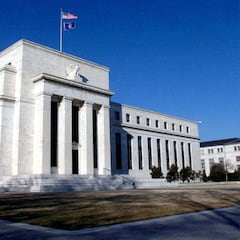What are the reasons behind bank closures in the US?
Communities around the US are seeing local branches of banks shuttered, California has been one of the states especially hard hit but is not alone.

The US banking sector has been going through major changes over the past two decades. The number of banks has nearly halved while large financial institutions have become the majority share of the banking industry.
In recent years there has been an acceleration of branch closures as banks move away from in-person service at brick-and-mortar branches, instead offering their services on-line. But this is creating banking deserts, especially in low-income and minority-majority communities as well as rural areas.
You might be interested in: List of banks that will close this fall: Wells Fargo, Santander, Bank of America…
What are the reasons behind bank closures in the US?
During the pandemic bank closures doubled according to the National Community Reinvestment Coalition (NCRC) with banks shuttering over 4,000 branches since March 2020. At 201 closures per month, that is more than double the monthly rate during the 10 years prior. That however, was just a acceleration of an aggressive policy to close physical locations which began after the Great Recession.
Mergers and acquisitions have played a big role in banks closing branches but dwindling foot traffic also has a hand in the falling number of bank storefronts on streets in communities across the nation.
Some customers have been taking to on-line and mobile banking services because they find them more convenient than going to their local branch. Other customers have no choice as banks realizing their cost-cutting benefits cut in-person services to nudge the holdouts into using them.
via @ResearchARC The Decline of Bank Branches and the Rise of Atlanta Banking Deserts: Hard to find (and save) money in the (banking) desert.
— Census State Data Centers (@censusSDC) September 8, 2023
https://t.co/DyZDLzk2hr
The NCRC found that in the ten years between March 2010 and March 2020, that there was a 14 percent loss nationally in the number of bank branches, a net total of almost 12,000. Their most recent report from 2022 found that since the onset of the pandemic until the end of 2021 another 4,000 disappeared.
Wells Fargo had the most net closures in 2021 at 267, US Bancorp was a close runner-up with 257 according to a report by S&P Global Market Intelligence. Respectively, California, Michigan, New York, Florida and Illinois were the five states which were hardest hit by branch closings.
There are half as many banks as in 2000
Just over 20 years ago there were over 8,000 banks in the United States but that number dropped to 4,136 in 2022 according to the FDIC. Small banks are decreasing the fastest. The repealing of the Glass-Steagall Act in 1999 aided in the growth of the behemoths like JPMorgan Chase, Bank of America and Citigroup, currently the three largest banks.
Commercial banks were allowed to merge with investment firms that could provide both services. That came at the cost of community and regional banks with the large financial institutions’ share of assets going from around 47 percent twenty years ago to roughly 66 percent.
Small businesses and communities suffer from loss of local branches
Related stories
Smaller community banks tend to outperform larger banks when the economy is put under strain as it was during the covid-19 pandemic and the 2008 financial crisis before that. They also specialize in lending to small businesses, owners of which often need to visit a local branch to do business. More and more Americans are finding themsleves in banking deserts, where there isn’t a branch within ten miles of where they live making it difficult to do simple transactions like withdrawing or depositing cash.
As well community and regional banks use their assets to make investments in the community. The loss of local branches also takes away the opportunity for clients to have face-to-face interactions. These can help build trust with clients as well as increase financial literacy.


